There are many situations where you need to cut some wire but simply don’t have the right tool at hand.
So what can you do? Is it possible to do the job without a wire cutter? And without too much hassle?
The short answer is a definitive yes.
I took my time, and I tried and tested several methods to find those that were the most effective and easiest to implement.
Let’s see the results.
Important
Safety first. When dealing with sharp tools or devices that can cause injuries, always use protective gloves and goggles when necessary.
1. Chisel or Flat-Head Screwdriver
While it’s not so common to have a chisel at home (especially if you live in an apartment), most people do have at least one flat-head screwdriver at hand.
Tools needed:
- a flat-head screwdriver or a chisel
- a hammer
- hard surface (preferably made of metal)
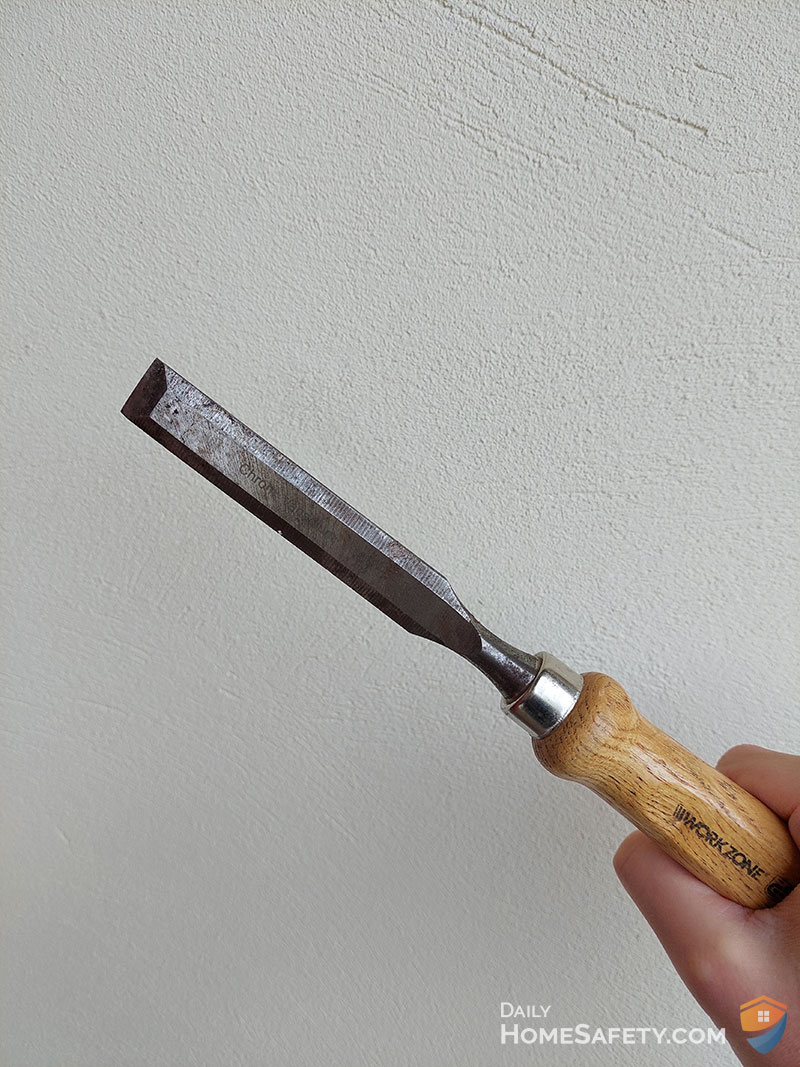

So the basic concept is that you cut the wire by hitting the end of either a screwdriver or a chisel with a hammer, like this:
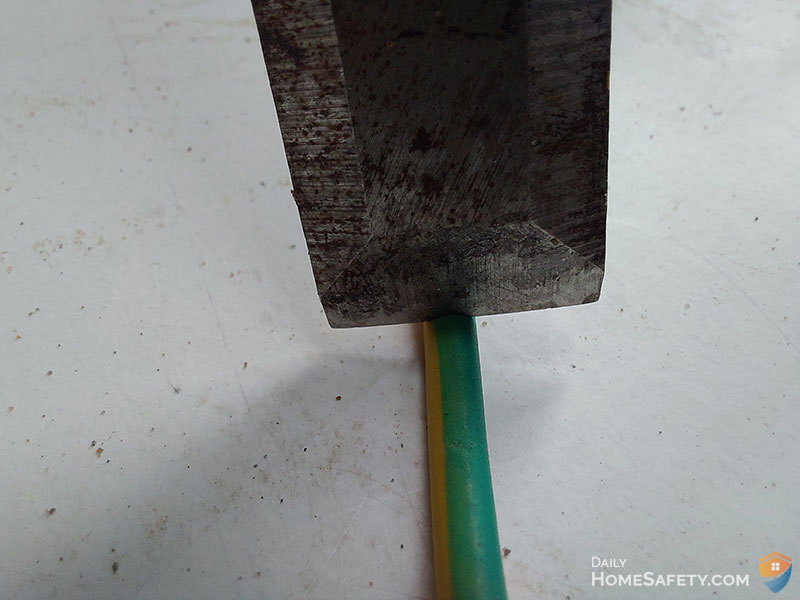

Keep in mind that the handle of most screwdrivers is made of plastic that may break if there’s a strong direct impact. To reduce the chance of this scenario, it’s best practice to wrap the handle in either duct tape or cloth and avoid applying too much force.
For soft and thin wires you can use the screwdriver.
For example, copper wires are usually pretty soft. Pure copper is softer and more malleable than steel, and even brass (an alloy of copper and zinc) has a lower score than stainless steel on the Hardness Rockwell B-Scale (source).
For cables and thicker wires, in my experience, often you’ll need to use a chisel instead (much depends on the gauge and the material of the wire).
Always work on a hard surface. Metal is best.
2. Sharp Knife
First, let’s be clear. You probably won’t be able to cut any wire with a reasonable diameter with a regular kitchen knife or a pocket knife without dulling the blade.
A normal knife might cut a soft wire of a diameter of 1/32 inch or less but don’t expect too much from it.
For example, most standard sharp knives or jack-knives will cut soft bead stringing wire or fine-stranded copper lightning wire but not solid wires.
In contrast, you’ll get a much better result with special knives, such as tactical or survival knives.

While it’s true that not all tactical knives are the same, most of them will be able to cut electrical wires and other relatively soft and flexible wires or cables without much difficulty.
For the best result, the wire should be under tension when cutting.
As a side note, a knife can also be used to remove wire insulation if you don’t have a wire stripper at hand.
3. Try Bending
Malleable metals, such as copper or aluminum, are relatively easy to bend and break without using pliers or other tools. The softer the wire the easier it to bend.
Although bending is not a sophisticated method, sometimes it works. All you have to do is bend the wire back and forth, up and down until it breaks. Malleable metals will take longer to break than “less” malleable ones.
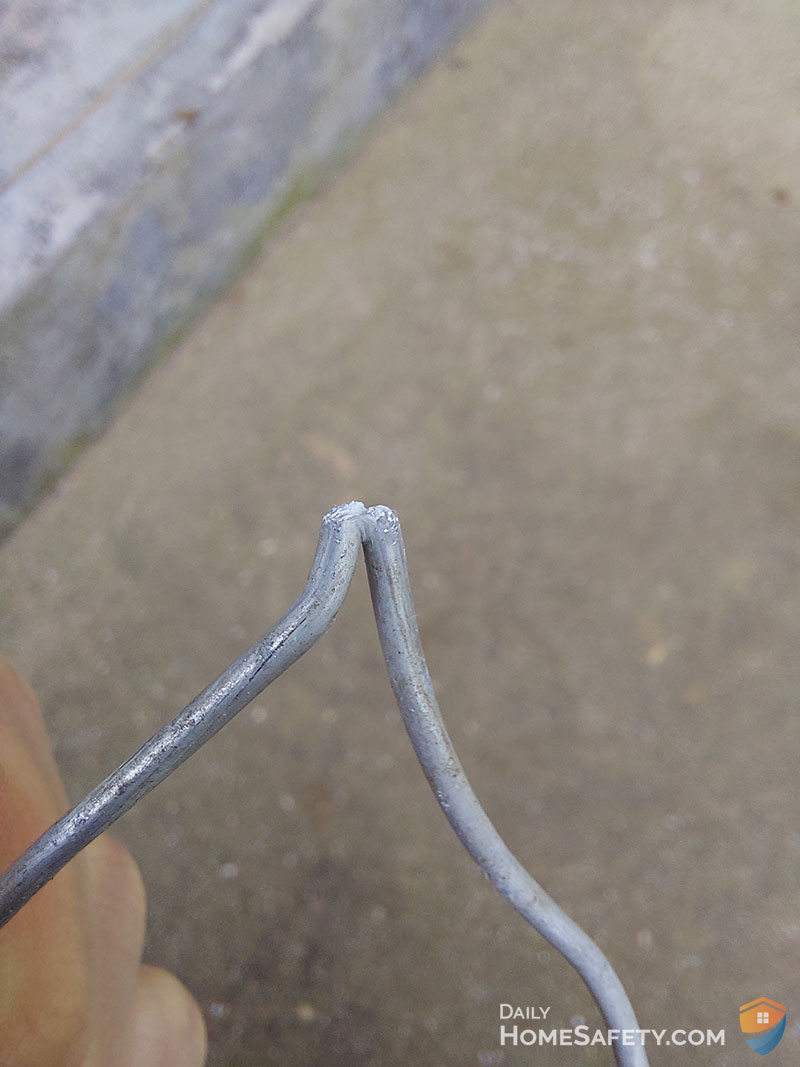
In most cases, this method won’t work if the wire has insulation, which should be removed before you start the process, just to make your life easier.
The main disadvantage of bending is that it’ll be visible that the job was done without a wire cutter or pliers as the edges won’t be as smooth. But if you don’t have any tools available at home, you may want to give this method a try, anyway.
I highly recommend that you wear safety gloves during the process as the separating edges of the wire can be very sharp.
4. Hacksaw
Using a hacksaw is one of the most reliable ways to cut most types of wires without a wire cutter.
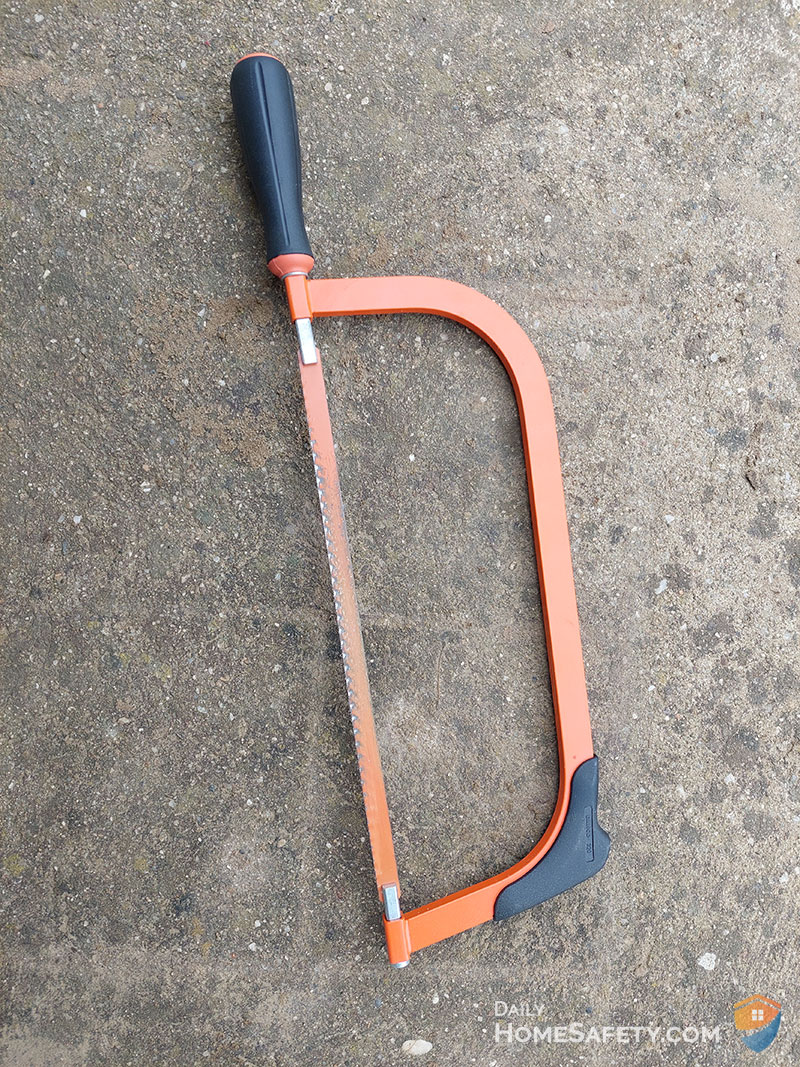
When it comes to hacksaws, it’s useful to know that not all blades are the same. The usual way to distinguish them is by the number of teeth per inch (TPI).
As a rule of thumb, the thicker and harder the metal you want to cut, the fewer teeth per inch you’ll need.
The good news is that when you cut wires or cables, in most cases, you don’t really have to worry about the blade type. If the wire is not too thick, you’ll get a nicer result if you use a fine or medium (24 or 32 TPI) blade.
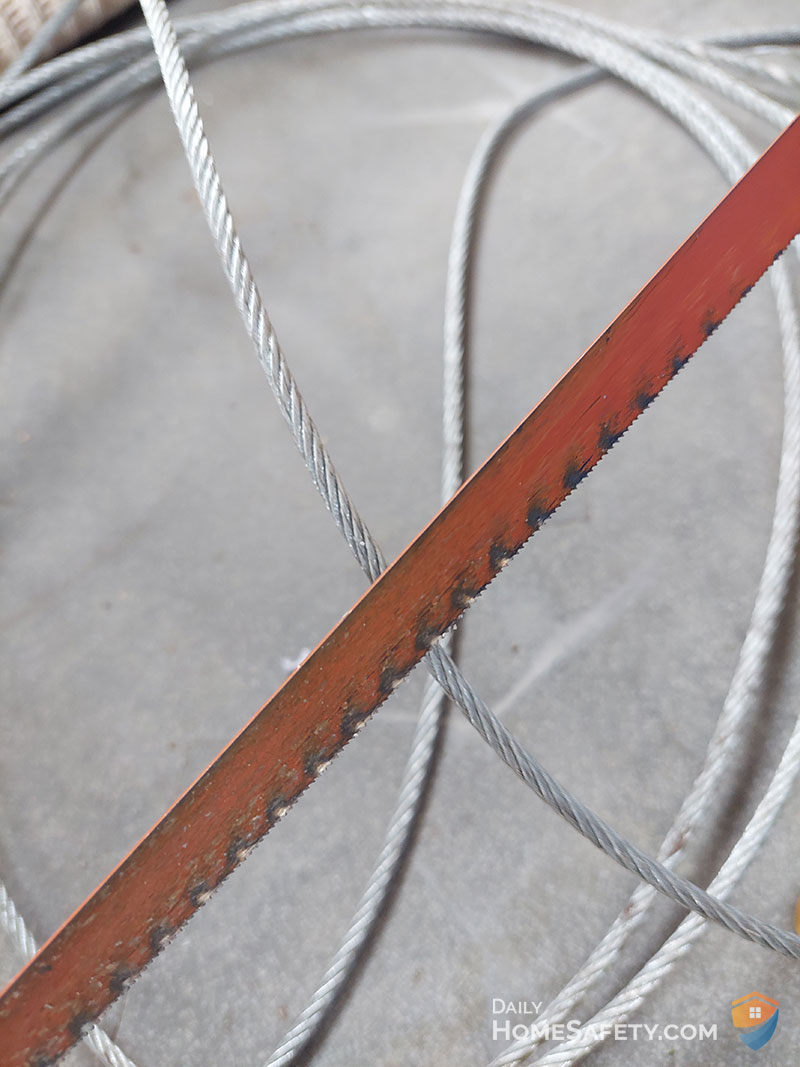
Steps:
- Mark the wire where you want to cut it using a pen or a marker (or duct tape).
- Clamp the wire firmly to the work table or use a vise.
- Put on protective gloves.
- Check if the blade is installed properly (it should be tight and straight)
- Start cutting the wire slowly with even strokes.
In my experience, cutting flexible and soft wires with a hacksaw can be quite a challenge as you have to stretch them between two closely positioned fixed anchors, otherwise, you’ll sweat the job. It’s a lot easier if you want to cut hard wire.
Again, always follow safety rules and wear protective gloves when working with tools that could potentially injure you, such as a hacksaw.
5. Angle Grinder
Using an angle grinder to cut a wire might sound like a slight exaggeration, however, it does the job perfectly. Practically, there’s no wire it can’t cope with.
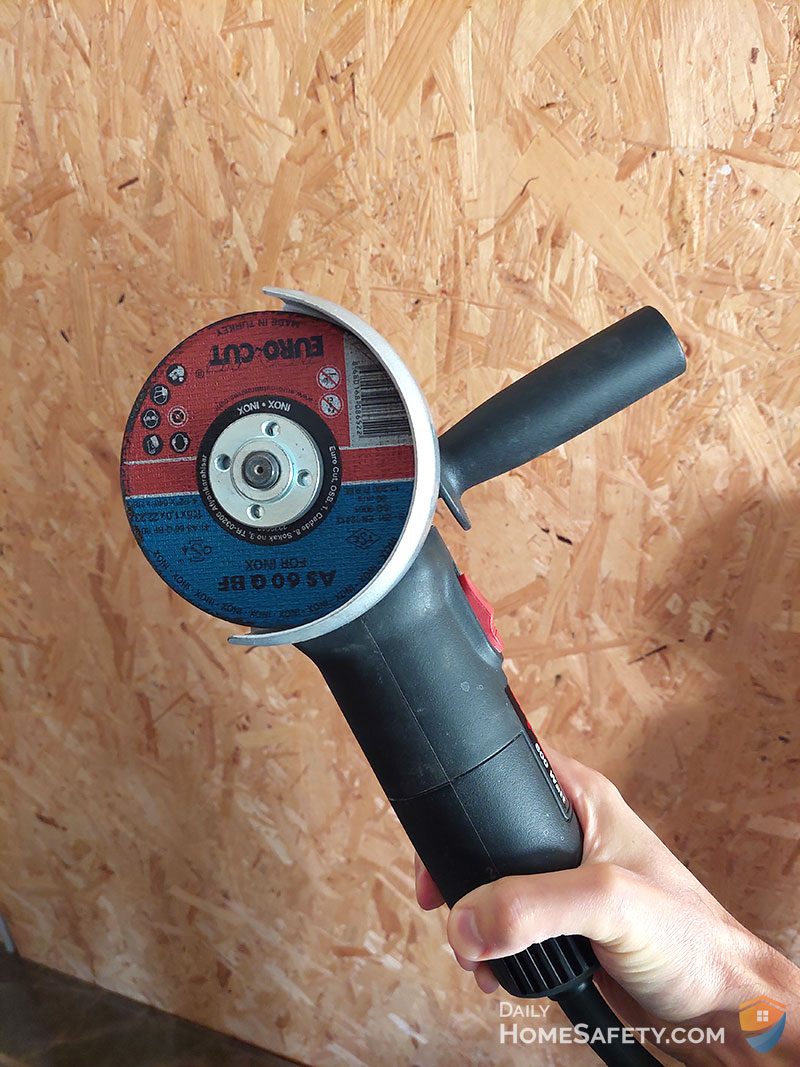
To be honest, I doubt that there are too many people who have an angle grinder at home but they don’t have a simple wire cutter.
Nevertheless, in certain cases (but not always), cutting wire with an angle grinder can be significantly easier and lead to a better outcome than doing the job with a wire cutter.
I prefer to use my angle grinder to cut harder and thicker metal wires, such as wire rope, steel cable, or artistic wire. That doesn’t mean however that you can’t use it for cables or wires with a smaller diameter.
If you work with an angle grinder, it usually comes with sparks. Therefore, besides using gloves, you should wear safety goggles and a long sleeve shirt to avoid any injuries.
Pro Tip
If you need to cut braided wire rope, wrap some duct tape around where you want to cut it to prevent it from fraying. You can see the result of this method in the photo below.

6. Scissors
Generally speaking, you have to be careful if you want to use scissors to cut wire. Most scissors will cut through plastic insulation without any problem, but when it comes to the metal part, they will struggle.

Therefore, in most cases, I recommend against using scissors. If you don’t have any other choice, your best bet is a pair of heavy-duty scissors.
Even with relatively robust and sturdy scissors, you won’t be able to cut hard and thick metal wires without dulling the blade.
However, you can succeed with soft and thin single-stranded wires using the right type of scissors (mainly industrial scissors) but keep in mind that the end result will be less satisfactory than if you use a dedicated tool.
7. Tin Snips
Tin snips or tin shears are usually a much better choice than scissors as they’re specially designed to cut metal.
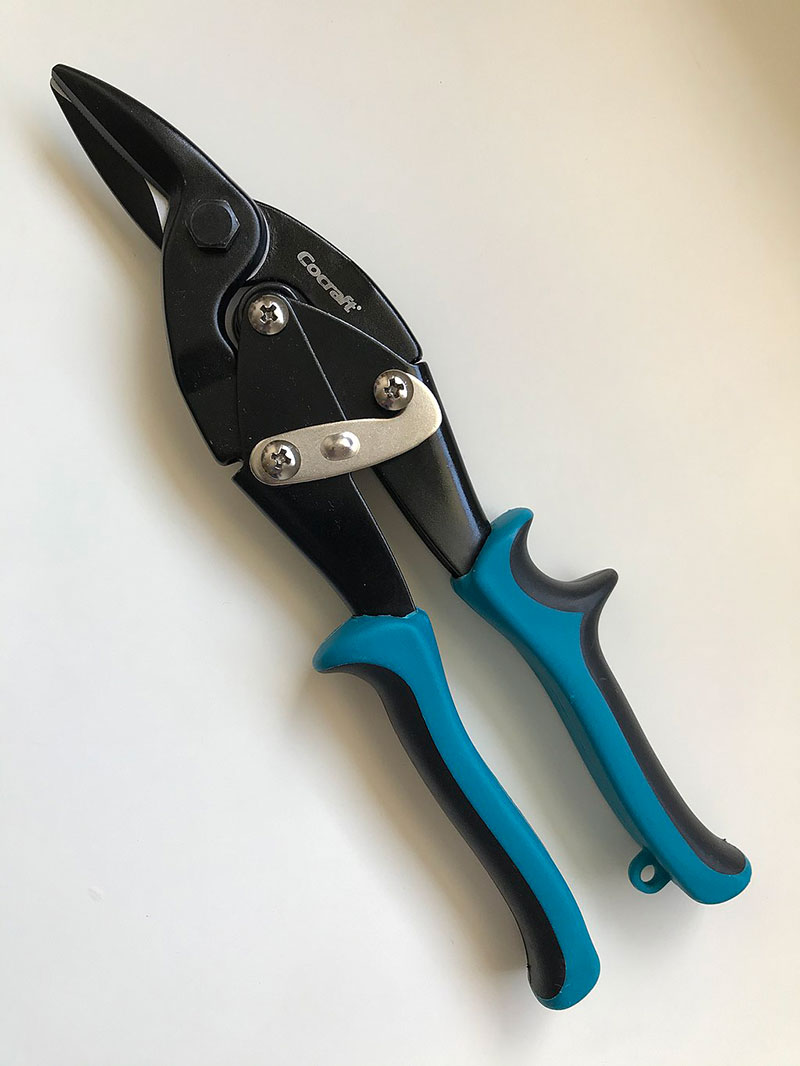
Tin snips are mainly used to cut sheet metal and for that job you can find many types of tin snips on the market. Also, they require some practice and knowledge for proper use.
Fortunately, cutting wires is much simpler than cutting circles into a metal sheet. Straight-cutting compound snips and large tin snips are best for straight cuts but most snips will do the job properly.
By opening the snips fully and wide, you make the process smoother because this way you’ll be able to apply more force with less effort.
Don’t forget to wear protective gloves because the blade of tin snips is extremely sharp.
8. Cordless Drill and MAPP Gas Torch
It’s a really cool method to cut a wire rope without pliers or a wire cutter.
To make it work, you’ll need
- a cordless drill,
- a MAPP gas torch,
- and a vise.
As a first step clamp the wire rope between the jaws of the vise.
Then fasten the end of the wire into the chuck of the drill.
Now you have to heat the wire with the gas torch until it gets really hot (you’ll see that it changes color to red) and then slowly and gradually turn the drill until the wire eventually breaks.
The whole process is clearly demonstrated in the video below:

The main advantage of this method is that it gives the wire a really nice end that won’t fray.
9. Rotary Tool
A rotary tool (also known as Dremel) is a multipurpose device that you can also use to cut metal and wires up to about a 1-inch wire gauge, depending on the cut-off wheel.

It’s very important though that you do that with the right type of cut-off disc. For example, this thin cutting wheel is suitable to use on many different metal types, such as copper or aluminum, according to Dremel.
The advantages of a rotary tool are similar to those of an angle grinder. It’s simple to use and provides quick and nice results.
A rotary tool, like an angle grinder, can generate sparks, so make sure you obey safety rules.
10. Reciprocating Saw
This handy tool cuts through most wires like a hot knife through butter.
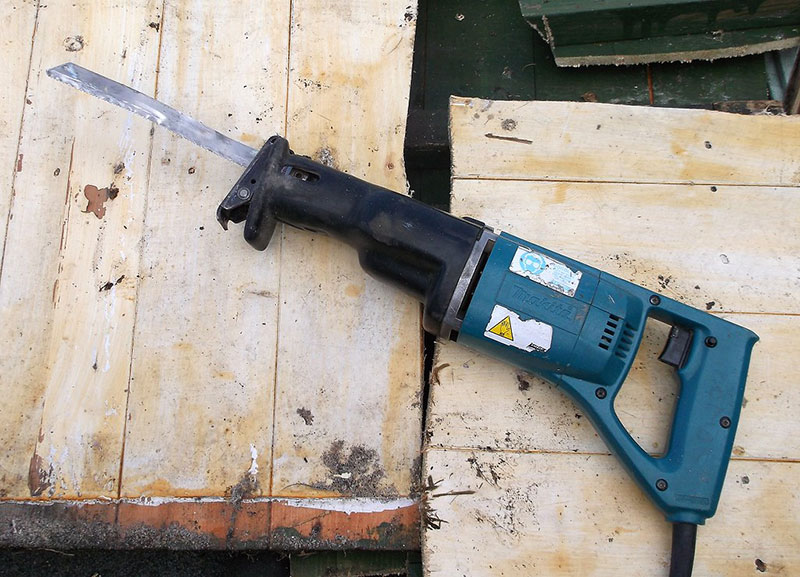
The most important thing you must be aware of is that not all blades are suitable to cut metal or wire. You must install a metal-cutting blade in order to get a nice and even cut.
Also, consider using a blade with a higher number of teeth per inch to get a fine end.
The more teeth the blade has, the smoother the cut will be.
Similar to using a hacksaw, as a first step, you’ll need to clamp the wire, so a vise could be handy. Of course, you can find other ways to fix it on the workbench. As for me, I prefer to use a vise because that provides a really firm grip.
If you don’t know how to use your reciprocating saw properly, check out this article first.
You may also like: Stylish ways to hide TV wires without cutting the wall
11. Pliers and Pincers
In most households, you’ll find some type of pliers. These are extremely versatile tools, so chances are good that you also have one in the bottom of a drawer.
Most pliers are suitable for cutting a relatively thin wire, such as an electrical wire.
It’s completely okay to use your diagonal cutting pliers or lineman’s pliers for this purpose. Even needle nose pliers can cut through soft wires with a small gauge (but not hard wires).

Another tool you can use is carpenters’ pincers. The edges of their jaws are pretty sharp which will allow you to cut through smaller diameter wires quite easily.
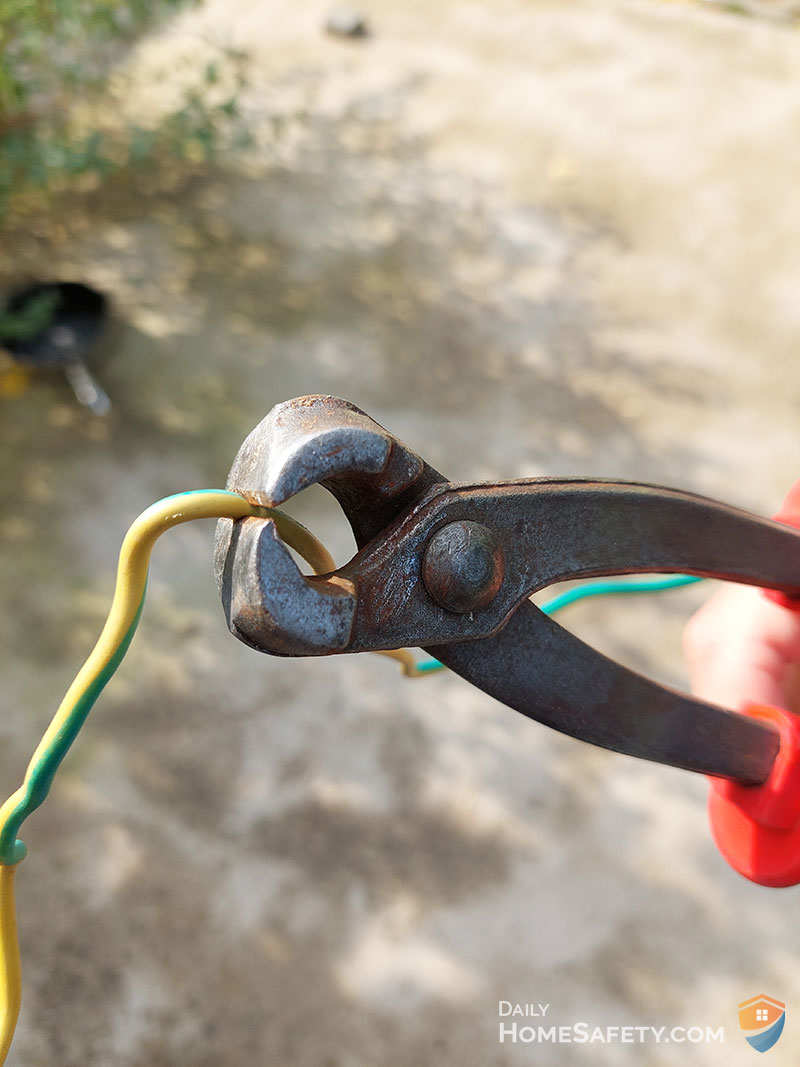
For thicker wires, I suggest you use fencing pliers if you own one. These are easier to work with when it comes to hard wires.
Putting It All Together
As you can see, there are many ways you can cut a wire without a wire cutter. The above-mentioned tools are all suitable to cut wire, however, much depends on the thickness and material.
When dealing with soft wires with a small gauge, whichever tool you choose, you shouldn’t face any difficulties. As a side note: to avoid breaking your nail clippers, do not use them to cut wire.
For thicker and hard wires, I wouldn’t use scissors, knives, or a flat-head screwdriver because chances are good that either you won’t succeed or the end result will be unsatisfactory (or you break the tool). In that case, you should also skip bending. The other methods should work seamlessly.
One more thing: if you’re a new reader you might not know that I always put safety first. I strongly believe that the safe way is the best way, so please, always follow safety rules, even if they seem tedious, and wear protective gear.
Photo credits: DailyHomeSafety, Flickr (arbyreed, Phil Parker), Wikimedia (Jin Zan, Horst)











